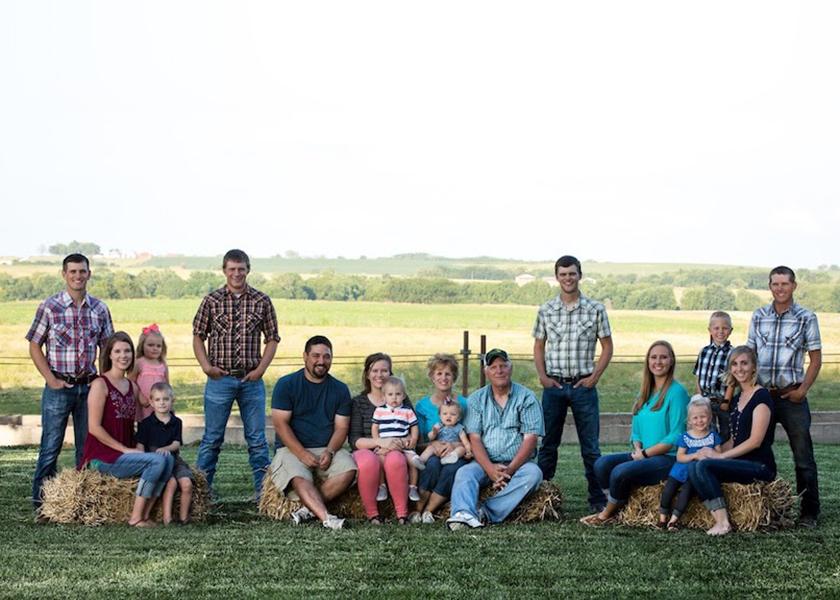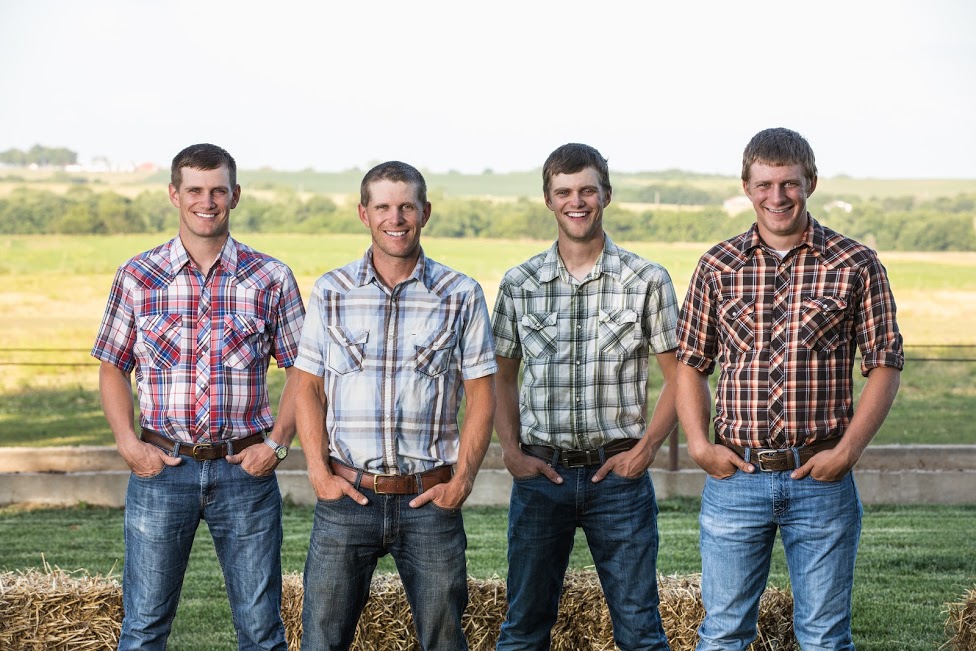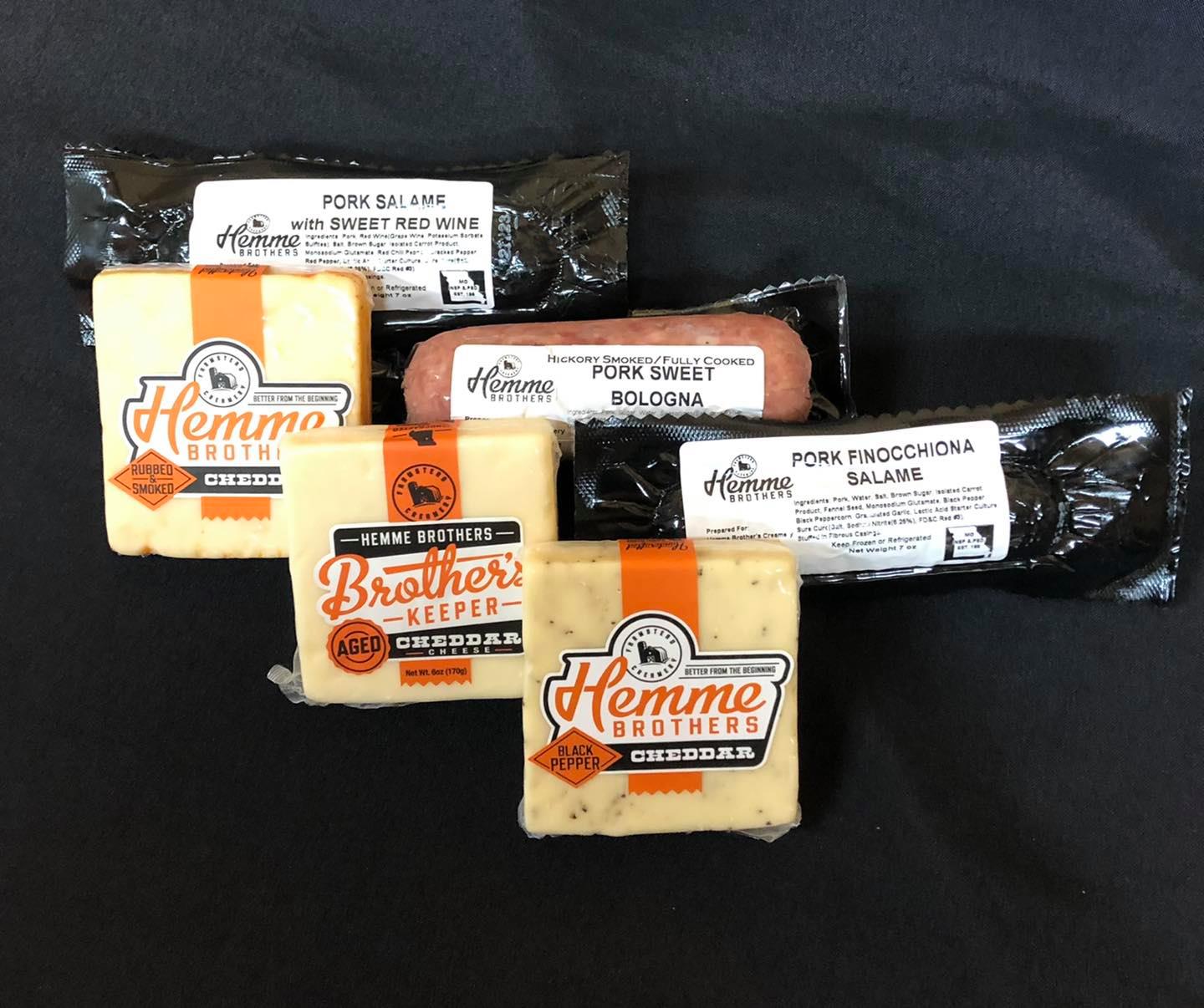Embracing Change: How the Magic of Cheese Helped Revive a Missouri Dairy

The Hemme Brothers in Sweet Spring, Mo. were faced with a dilemma. Either adapt to change, grow or become another statistic in dairy farms forced to call it quits. With four brothers and their father determined to continue to farm, what the family did to reinvent their farm has paid off with success, as well as secured their future.
“Our family started this operation back in 1996,” says Nathan Hemme, one of the brothers of the Hemme Brothers Creamery. “My mom and dad started milking cows then, and as each of us brothers started graduating from college, each one came back and we kept either adding cows or we added this creamery enterprise.”
The Staying Power of Cheese
The family turned to cheese as their farm’s bread and butter. And today, they’re the only dairy left in Saline County, Mo., as cheese helped the four brothers, along with their father, remain dairymen.
“In 2011, we started thinking, ‘How are we going to be more sustainable in the future?’ And we didn't know if that was going to be milking more cows or making an artisan product and adding a niche market to our business,” he says. “And so, we started researching ways to make cheese.”
The research wasn’t done on the web or by reading a book. Instead, the family knew they had to not only learn from the best, but also see it first-hand. So, Nathan actually traveled to Wisconsin and immersed himself in the magic of cheesemaking.
“When we decided to pull the trigger in 2015 to start making cheese, I took a short course up at the University of Wisconsin. And then our other biggest resource was hiring our chief consultant.”

The process to learn the ins and outs of making cheese took several. And then once the brothers decided to dive into the cheesemaking business, they launched Hemme Brothers Creamery, launching into the business with cheddar cheese.
“We decided to start making cheddar because we can take this fluid milk, condense it down into about 10% of the weight that it was. So, the logistics worked out really well for us,” says Nathan.
The Magic of Cheese
The transition didn’t just work out well. The decision to start making and selling artisan cheese exploded the demand for the products they produce.
“We would give credit to the high demand of our cheese due to its quality,” he says. “It also has a good story behind it. But the story only sells cheese the first time, the quality sells of the second, third and fourth time.”
It’s the quality piece of Hemme Brothers cheese today that has become the key ingredient to their success.
“The magic of the cheese is the quality and you can't have quality unless you choose quality milk. And maybe that's kind of a simple explanation of why our cheese tastes so good, but it's the truth,” he says.
The quality comes through in the taste. And while the only way to truly describe it is to try their signature cheese, an experience that Nathan says boasts various flavors that capture the taste buds of consumers.
“It's got a little bit of a fruity flavor to it, and nutty. And it's a nice sharp cheddar,” he explains.
“We would give credit to the high demand of our cheese due to its quality,” he says. “It also has a good story behind it. But the story only sells cheese the first time, the quality sells of the second, third and fourth time.”
The quality of their dairy isn’t just in how the milk is processed, but how they raise their feed and their cows. Regenerative agriculture practices are also something the farm is tapping into, and efforts that are helping the Hemme Brothers secure their future in a sustainable way.
“It's important that we do quality work from the time my brother plants the seed in the ground until that product gets all the way back to me and we package that cheese for someone to buy,” he says.

Growth Not in Numbers
Embracing change, the Hemme Brothers milk 150 cows today, which is proof growth doesn’t always have to come in adding cows.
“If we didn't go down the road of making cheese ourselves, we would probably milk 300 to 400 cows today, and why we didn't go that route is we're going to have to milk even more 10 years from now, like 700 to 800 cows. And then we’d have to start milking 1,000 cows. When does it end? And so, if we can take the milk that we already are making, and add value to it, we can bring back future generations. And we took that way, instead of adding more cows,” adds Nathan.
In a labor tight market today, keeping cow numbers down has also helped this dairy fend of the labor struggles that dairies across the country continue to battle. With the four brothers working on the farm, he says their biggest challenge is processing all the milk they produce.
“We're processing 25 to 30% of our milk. And so, in the future, we would like to get that to 100% and be able to be able to market 100% of our milk ourselves, instead of relying on a cooperative to do 75% right now,” says Nathan.
A strategy to sustainably grow, Nathan says it was key in the success of bringing all the Hemme brothers back to the family farm. And instead of riding the waves of the milk markets, Nathan says they’re setting their own price with the cheese business.
“For years, it's been the story of, ‘oh, we'll have two good years, or we have one good year of milk prices.’ And that's why we started getting into the cheese business. And we want to have a good year every year. And you can't do that with commodity milk prices. And you hate to say that, but that's the truth,” says Nathan.
From weathering the turbulence of commodity prices as price takers, to working their way to now being price makers, the Hemme brothers have found a niche that can help their family legacy live on.







